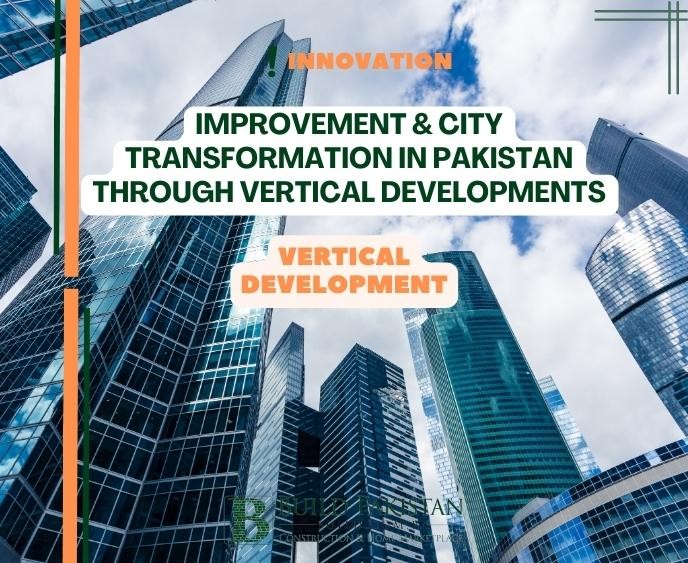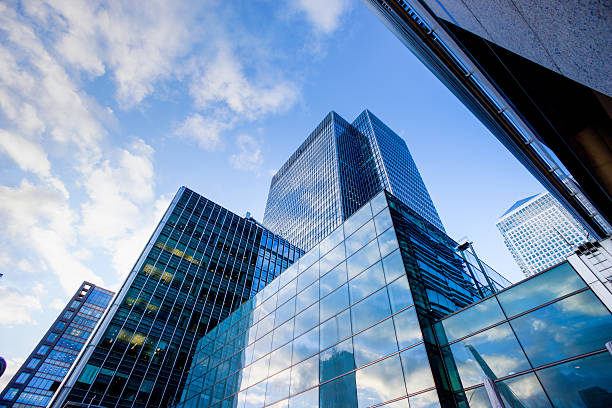Improvement & City Transformation in Pakistan Through Vertical Developments

Introduction:
The real estate industry is essential to determining the look of cities and promoting economic expansion. Vertical innovations have contributed to a considerable alteration of cities all around the world throughout time. This blog focuses mostly on Pakistan while exploring the beneficial effects of vertical developments on cities throughout the world. We will also examine the problems caused by horizontal construction and provide ideas to make vertical real estate more appealing to Pakistani homebuyers.
DEVELOPMENTS GOING VERTICAL
The real estate sector plays a crucial role in establishing how cities appear and encouraging economic growth. Cities all across the world have changed significantly over time as a result of vertical developments. While investigating the positive consequences of vertical growth on cities throughout the world, this blog primarily focuses on Pakistan. Additionally, we'll look at the issues raised by horizontal building and provide solutions to make vertical real estate more desirable to Pakistani homebuyers.

IMPROVEMENTS ARE GOING VERTICAL
OPTIMISATION OF URBAN DENSITY AND INFRASTRUCTURE:
Cities can efficiently utilise their limited land resources
thanks to vertical development. Cities may house more people in a smaller space
by expanding vertically, which prevents urban sprawl. By maximising the use of
the infrastructure, this increased urban density contributes to better utility,
public service, and transportation systems. As an illustration, Dubai, United
Arab Emirates, has embraced vertical expansion and turned its skyline into an
architectural masterpiece. The world's tallest structure, the city's landmark
Burj Khalifa, draws tourists and stimulates the economy.
OPPORTUNITIES FOR INVESTMENT AND ECONOMIC GROWTH:
By drawing in investments, producing jobs, and promoting a
thriving real estate market, vertical projects support economic growth.
Incorporating commercial, residential, and recreational amenities, these
complexes frequently function as mixed-use areas, which further stimulate
economic activity. A prime illustration of the economic potential of vertical
projects is the redevelopment of Hudson Yards in New York City. The region has
been revitalised by this substantial construction, drawing both companies and
visitors as well as locals.
Pakistan's vertical development
In its biggest cities, Pakistan has also noticed an
increasing tendency towards vertical building. High-rise buildings are becoming
popular in cities like Karachi, Lahore, and Islamabad in an effort to
accommodate the growing demand for residential and commercial space.
Pakistan's shift to vertical growth offers the following
benefits:
SUCCESSFUL LAND UTILISATION:
In Pakistan, vertical developments allow for the best
possible use of the land, which is essential in urban areas where space is at a
premium. As more people may live in these projects, population density rises
without encroaching on open space or agricultural regions.
INCREASED STRUCTURE:
The effective utilisation of urban infrastructure, such as
transportation networks, water and sanitation systems, and energy resources, is
encouraged by vertical developments in Pakistan. Buildings in close proximity
to one another eliminate the need for major infrastructure development, which
lowers costs and improves service delivery.
OBJECTIVE HORIZONTAL DEVELOPMENTS: PROBLEMS
Although Pakistan has traditionally used a horizontal growth
strategy, this technique has several drawbacks that might reduce urban
efficiency:
URBAN WEEDS:
Horizontal developments frequently result in urban sprawl, in
which cities encroach more and more territory. This might put a pressure on the
transport system, lengthen commutes, and cause environmental damage.
INADEQUATE LAND USE:
Horizontal developments use more land per home, which results
in inefficient land use. This inefficiency may lead to more expensive
infrastructure, longer travel times, and less accessibility to facilities.
Conclusion:
Cities all around the world have been altered by vertical
constructions because they maximise land use, foster economic growth, and
improve urban efficiency. Pakistan may efficiently manage its urban
difficulties by utilising the benefits of vertical real estate. Vertical
projects may be made more appealing to Pakistani homebuyers by implementing the
right tactics, educating the public, and introducing community-centric
features, creating sustainable and thriving cities for the future.









